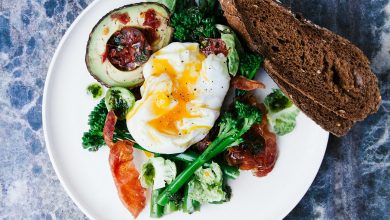
Beyond just pelvic discomfort, endometriosis affects daily life, energy levels, and general well-being. The ongoing inflammation, hormone changes, and tissue development outside the uterus cause pain that disrupts daily activities. Improving quality of life and lowering long-term problems depend on efficient management of symptoms. A combination of lifestyle changes, dietary changes, and medical treatment can significantly reduce pain. Knowing what factors affect endometriosis symptoms helps one create a customized plan that supports balance, restores comfort, and improves general health without allowing the condition to take over.
Reducing Inflammation Through Diet and Nutrition
Endometriosis symptoms are mostly related to chronic inflammation; hence, dietary decisions are quite important for symptom control. While certain foods include natural ingredients that support hormonal balance and assist in calming inflammation, others set off inflammatory reactions that aggravate pain and suffering. Selecting nutrient-dense, anti-inflammatory foods lays the groundwork for controlling flare-ups and fostering long-term comfort. Found in foods like salmon and chia seeds, fatty fish high in omega-3 fatty acids help reduce inflammatory indicators and promote hormone control. Antioxidants found in leafy greens, berries, and cruciferous vegetables help combat oxidative stress—a prevalent element in inflammation connected to endometriosis. Foods high in whole grains and fiber help digestion and estrogen metabolism, preventing excessive estrogen from running throughout the body. Processed meals, processed sugars, and dairy products aggravate inflammation, and so are less ideal for controlling symptoms.
Prioritizing Restorative Sleep for Hormonal Balance
Sleep is essential for controlling hormones, lowering inflammation, and supporting general health. Disturbed sleep patterns raise cortisol levels, which aggravate hormonal imbalances associated with endometriosis and pain sensitivity. Developing a regular evening schedule helps the body mend and recover, as well as improves the quality of sleep. Deeper rest is encouraged by a soothing pre-bed routine including cutting screen time, lowering stress levels, and designing a comfortable sleeping environment. Heat therapy, magnesium supplements, or mild stretching before bed help to manage nighttime discomfort so as to reduce disturbances and enable continuous sleep cycles. Consumed late in the day, caffeine and stimulants disrupt melatonin generation, which increases difficulty falling asleep. Giving excellent sleep priority helps control inflammation and stress reactions, which eventually helps control symptoms and increase energy levels all through the day.
Incorporating Targeted Movement and Exercise
Exercise helps endometriosis treatment by increasing circulation, lowering tension, and encouraging endorphin release—which naturally helps to reduce pain. Although high-impact workouts might occasionally aggravate symptoms, selecting low-impact, restorative activity nourishes the body without aggravating inflammation. A well-balanced workout improves flexibility, builds muscles, and promotes general wellness. Pilates and yoga help to release tension brought on by endometriosis by stressing pelvic floor relaxation, core strength, and flexibility. Without taxing the body too much, walking, swimming, and moderate strength exercises boost circulation and help lower inflammation. By reducing stress-related muscle tension, deep breathing exercises and mindful movement help to further control pain. Maintaining regularity with movement helps to avoid stiffness, improve mood, and build long-term physical resilience against endometriosis-related pain.
Managing Stress to Support the Nervous System
Stress directly affects endometriosis symptoms by raising cortisol levels, which aggravate inflammation and hormonal imbalance. Stress management is, therefore, a major component of symptom control since it is related to pain sensitivity. Establishing a schedule with deliberate relaxation methods enables the nervous system to be regulated and lessens the effects of persistent stress on the body. Meditation, deep breathing, and gradual muscular relaxation are mindfulness techniques that help the body go into a parasympathetic state, therefore facilitating healing and rehabilitation. Acupuncture and massage therapy improve circulation and relieve muscle tension. Time spent in nature, pursuing hobbies, or practicing gratitude shifts focus away from pain and fosters a positive mindset. Reducing stress improves general resilience and helps the body control endometriosis symptoms.
Seeking Professional Guidance for Comprehensive Care
Although lifestyle changes help greatly reduce symptoms, competent medical advice offers a complete method of endometriosis management. Regular consultations with an experienced OBGYN in Richmond VA, allow one to evaluate hormone levels, assess treatment choices, and handle any underlying issues. When necessary, a medical practitioner guides the optimum course of action—that of hormone treatment, medicine, or surgical treatments. Birth control pills, progestin therapy, and laparoscopic surgery—among other treatment choices—help decrease pain and stop excessive tissue development. Imaging and pelvic checks guarantee that symptoms are under control and that no more issues arise. Combining lifestyle changes with medical treatments produces a balanced approach for effectively controlling endometriosis with confidence and raising the general quality of life.
Conclusion
Management of endometriosis calls for a combination of approaches addressing general well-being, hormonal balance, and inflammation. Emphasizing an anti-inflammatory diet, giving quality sleep a priority, including mild exercise, controlling stress, and consulting a doctor lays a firm basis for symptom treatment. A customized method helps you to negotiate endometriosis with more confidence, comfort, and resilience, therefore enabling a better quality of life and better long-term health.



